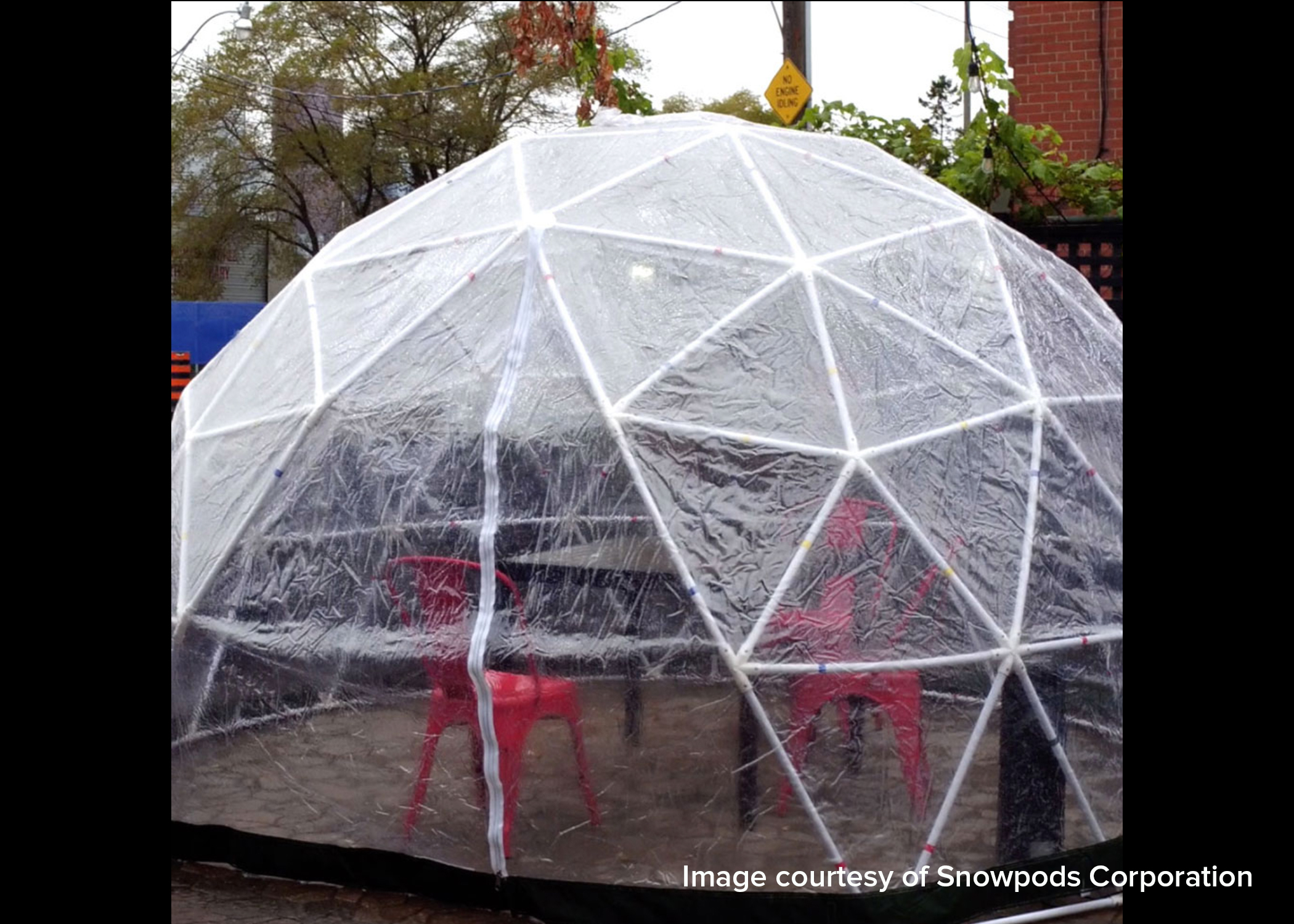As restaurants prepare for the colder winter months by installing heaters on patios and encouraging patrons to bring blankets from home to ward off chills while dining outdoors, a number of tents and igloos have started popping up as well. But how effective are these enclosures at preventing the spread of COVID-19? Are they any safer than eating indoors with proper spacing and other precautions?
Restaurants are trying desperately to stay open and prosper while protecting employees and customers from coronavirus infection. One of the strategies catching on is using clear bubble domes outdoors to create isolated dining spaces for small groups such as this company is marketing. Although the design of these dining pods varies widely, not all provide enough ventilation to protect fellow diners from exposure to droplets and particles produced from talking and breathing that can hang in the air, trapped inside the bubble.
However, if the dome surrounds just one table, and the people inside are already in one another’s social bubble, it may be a safer option than dining inside a restaurant where exposure risk from other people is greater. Dining at a restaurant is considered to be a riskier activity and a recent CDC study found that among 300 participants, people who became sick with the novel coronavirus were twice as likely to have eaten out at a restaurant within two weeks before testing positive.
Restaurants also differ in their ventilation levels as well as noise levels which may cause people to speak louder, increasing the risk of transmission of the virus. A dining pod may be a safer choice, but the risk of infection depends on who is gathering together and whether everyone included can be trusted to follow strict mask-wearing and social distancing in public. There should be some kind of airflow. Keeping one side of the tent open can prevent the trapping of contaminated air.
It is also important to make sure each dining pod is thoroughly cleaned and aired out before a new group enters. Servers should wear masks and diners should practice good hand hygiene and wear masks when not eating or drinking to protect employees and others. Read more about what to keep in mind when considering going out to bars and restaurants as establishments re-open by following this link to the Centers for Disease Control and Prevention.






Add Your Voice
0 Comments
Join the Discussion